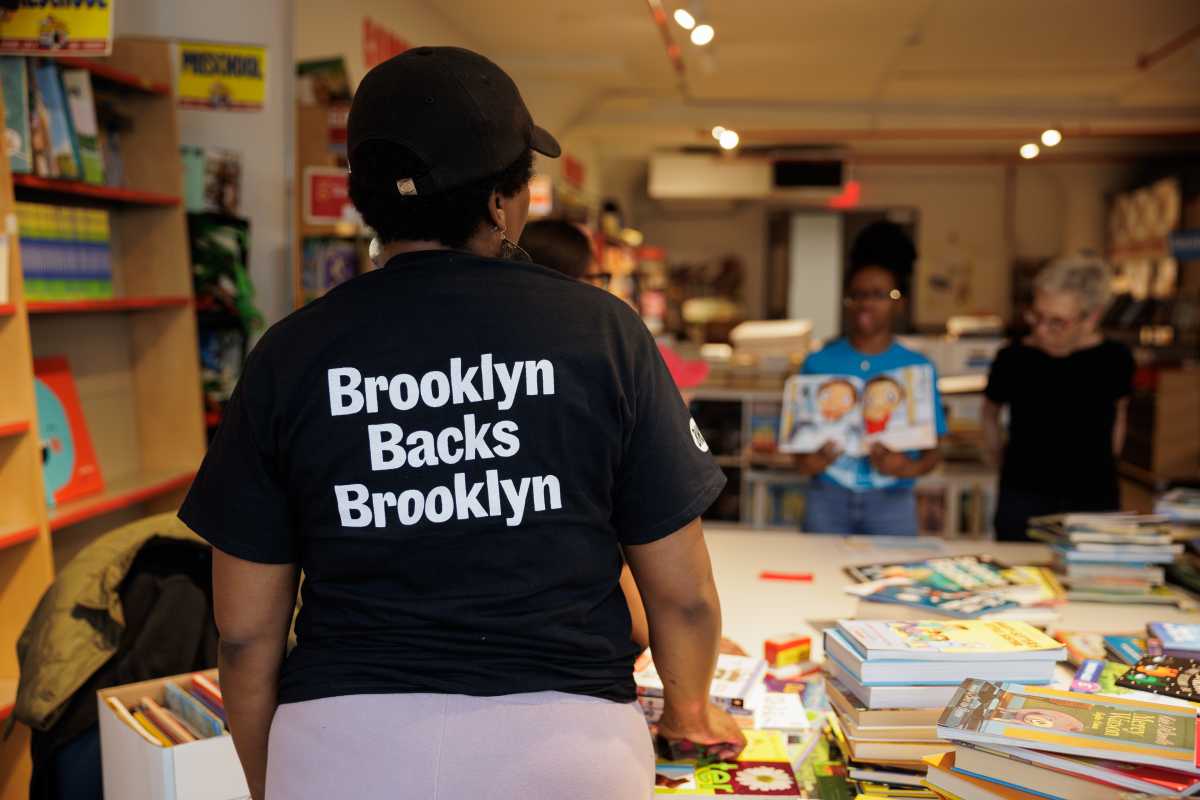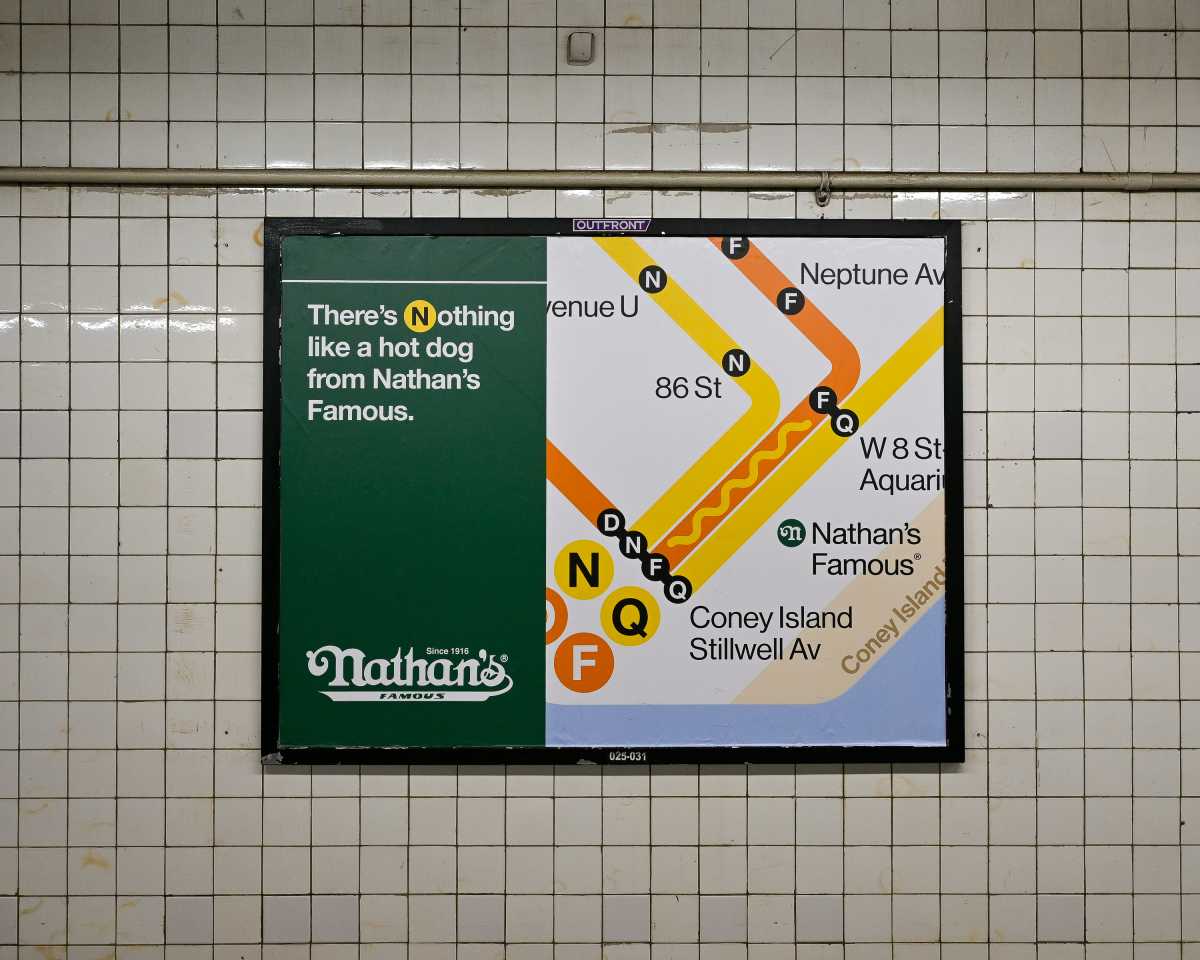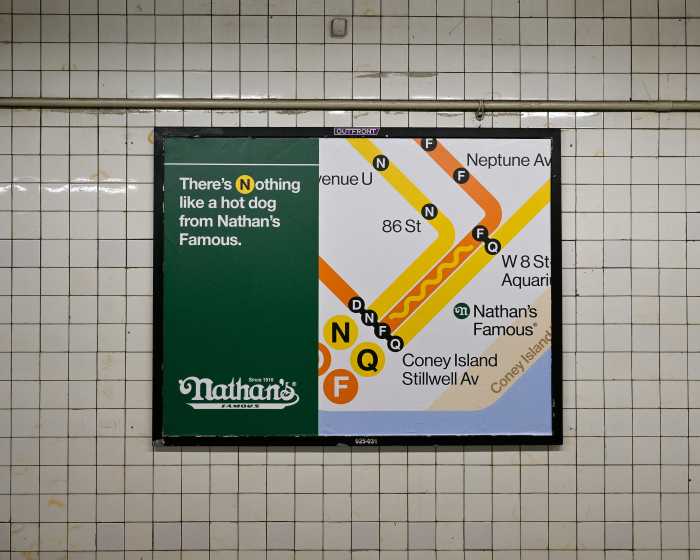Edward Albee and his ‘Woolf’ still flourishing
BY JERRY TALLMER | They’ve taken Edward Albee’s heart apart and put it back together again — oh yes, kiddies, unlike the Tin Woodman, Edward always had a heart — but America’s three-time Pulitzer Prize-winning playwright has lost none of his salt.
“You never saw the film?” Albee said (exploded gleefully) to a journalist who’d just confessed to the sin of never having absorbed the Richard and Elizabeth celluloid version of George and Martha’s long, dark, tumultuous night of truth and untruth telling, fun and games, verbal violence, a touch of physical violence and endless consumption of firewater.
“Never saw the movie?” Albee exclaimed again. “Good! I didn’t want to have to talk about it. It’s a very different thing from what I wrote.”
The journalist had, however, seen three flesh-and-blood state versions of “Who’s Afraid of Virginia Woolf?” — from its long-ago opener on October 13, 1962 at what was then called the Billy Rose Theatre on West 41st Street, with masterful Arthur Hill and unforgettable Uta Hagen as two people — a staid professor of history at “a small New England college” and his tumultuous wife Martha — tearing themselves and everybody else (cocky young George Grizzard, kooky young Melinda Dillon) apart; and then, 43 years later (March 20, 2005, Longacre Theatre), its topnotch rebirth at the skillful hands of Bill Irwin and (yes!) Kathleen Turner; and now, going-on-eight-years later, the Chicago Steppenwolf (no pun) production that opened at Broadway’s Booth Theater on October 13, 2012, exactly 50 years to the day from its Billy Rose premier, and has now drawn enough enthusiastic viewers to be twice extended.
“Who’s Afraid of Virginia Woolf?” ran for 664 performances (plus previews) in its first crack at Broadway, for 117 performances in the 1976 renewal, for 177 performances in 2005, and the current show is now a little beyond 100. Total, 1962-2013, more than 1,000 “Woolfs” and counting.
What other straight play gets 1,000 performances on Broadway these days?
Edward Albee, adopted child, born March 12, 1928, was 34 years old and already quite famous as progenitor of “The Zoo Story,” “The American Dream” and other short, caustic plays when the three-hour “Virginia Woolf” hit the scene — and exploded it.
Albee is now 84 and heir to the various human erosions of those years. This past June 4, he underwent crucial open-heart surgery conducted by Dr. Gabriele Di Luozzo at Mount Sinai Hospital in this city. It has slowed Albee down, but not stopped him.
Does he mind talking about it?
“I don’t care. I don’t mind. Let’s see. Well, my heart problems were getting a little complex. Then, you know, they [the medics] give you a choice, right?”
Live or die?
“Yes.”
Some few years earlier, when a stent procedure as portal to that same heart was deemed necessary, Edward had allowed as how he’d get around to it in a couple of weeks. In a couple of weeks, you’ll be dead, he was informed. “Oh,” Edward had said. “In that case, I’ll do it tomorrow.” And did.
Around that time, Albee said to the above journalist — oh heck, said to me — “I plan to go on writing till I’m 90 or gaga.”
Well, he’s getting up toward 90 and he’s not gaga, even if names, dates and places have an occasional tendency to float off into Otherland.
Are you happy, Edward?
“I wish I were more…” he says, then stops, regroups. Then: “I wish I were more in command of…everything…of my memory. I wish I wasn’t forgetting things. But I’m still pushing ahead.”
I’m not sure you’ve forgotten anything, Edward, the journalist declares, then tacks on: I myself go blank nowadays on a lot of proper names.
“I go blank on improper names,” Albee shoots back. Slow like a turtle, crazy like a fox.
How do you like this Steppenwolf version?
“I thought it was a good solid production,” the playwright says. “Lots of three-dimensionality and…”
Yes, yes — go on.
“I’m finished,” says Edward Albee.
George Bernard Shaw used to divide his output into Plays Pleasant and Plays Unpleasant. “Who’s Afraid of Virginia Woolf?” is both — funny as hell and ruthless as hell, all in one package, skillfully knitted together this time by Obie-winning director (for last year’s “Clybourne Park”) Pam MacKinnon and four skilled Steppenwolf actors: Amy Morton (Martha), Tracy Letts (George), Madison Dirks (Nick) and Carrie Coon (Honey, the skittish young booze hound who “blew up and then she went down” in a false pregnancy matching Martha’s long-ago real or imagined miscarriage — or had Martha and George’s hidden trauma been, gracious goodness…shhh…a dark-ages abortion?).
Remember, this is the same Edward Albee who, 36 years after “Virginia Woolf,” would scare the bejeezuss out of us with his cryptic, remorseless “The Play About the Baby.”
Tracy Letts, a Steppenwolf mainstay, may in fact be a bit too gifted. He is a playwright as well as an actor. As playwright, he won a Tony Award and a Pulitzer Prize for his 2008 “August: Osage County” (and repelled me with “Killer Joe”). But on stage at the Booth, he never stops acting for one minute, be it through ceaseless zigzagging vocal effects or a Saint Vitus Dance jitterbug physical underscoring of hands, feet, shoulders, elbows, fingernails, eyebrows, what have you. Which makes this George’s play, rather than the Martha’s play or the even-steven seesaw play I had absorbed through all these years.
Still and all, Albee himself, in admiration of Bill Irwin’s quiet power in both “Virginia Woolf” and the even more daring “The Goat,” now says, “I always thought George was more important to this play than Martha. If you just play the real character that I wrote, it’s okay with me. It is true that George is more subtle than Martha.”
To director Pam MacKinnon, who goes back a long way with Albee, “Who’s Afraid of Virginia Woolf?” is the direct answer to Eugene O’Neill’s “The Iceman Cometh” — where the guiding principle is “We Need Our Pipe Dreams.” And George says: “No!”
There is even a touch of Sandy Hook 2013 in this drama of 50 years ago — a boy who, mocked by everyone for verbal ineptness, slays his mother with a shotgun, his father with an automobile.
Whose idea was it to bring “Virginia Woolf” back to Broadway at this particular time?
“Some bright guy,” says Albee with a cryptic smile below his once trim, now flourishing, moustache.
The bright guy — says Albee’s whip-smart young assistant, Jakob Holder — may have been Broadway producer and PR man Jeff Richards, who saw the Steppenwolf production in Chicago. It may also have been Richards who suggested holding off the New York opening until the precise 50-year anniversary.
Albee may be a little bit more careful at 84 than at 24 — but he has not lost his tartness of tongue.
“Truth or illusion, toots — who knows the difference? That’s what this play is all about. I don’t think: Is this going to be effective? I just try to figure out what’s happening, what’s going on.
“People shouldn’t read plays — it has a bad effect. Broadway is so many revivals these days — plays that don’t deserve revival.”
There is a fleeting mention of a telegraph delivery boy in “Virginia Woolf.” Well, the young and hungry Mr. Edward Albee was once himself a bicycling telegraph delivery boy in this city.
“Oh, I put myself in my plays all the time,” he says.
And Martha — is she a precursor of “Three Tall Women?” Is she to any degree your, how shall we say — your adoptive mother?
Albee jumps up from his chair and fairly explodes with a mix of laughter and “That – – – – !” (An ugly, ugly word — the ugliest word in the English language.) But sits back down and says, “Martha’s a total invention.”
And George is not?
“I didn’t say he wasn’t. I invented them both.”
What would you have thought if 50 years ago somebody had said this play will still be around, 50 years from now?
“I would have been delighted.”
Is Edward Albee writing anything new these days?
“I’m getting back to it. A couple of things. One is a play called ‘Laying an Egg.’ I’ve got two acts of it. And maybe something else that’s just called ‘Silence.’ ”
Which brings us to Mr. Samuel Beckett, of late renown, whose masterwork “Waiting for Godot” seems to this hapless lifelong consumer of drama to pervade much of “Who’s Afraid of Virginia Woolf?” from title to fadeout, cradle to grave.
VLADIMIR: Moron!
ESTRAGON: Vermin!
V: Abortion!
E: Morpion!
V: Sewer-rat!
E: Curate!
V: Cretin!
E: Critic!
I can still see Bert Lahr collapsing in a swanlike swoon at this final thrust direct.
And now…George and Martha (yes, kiddies, as in General and Mrs. George Washington):
GEORGE: Monster!
MARTHA: Cochon!
G: Bête!
M: Canaille!
G: Putain!
That’s fun and games. What is more serious, more telling, more of a mournful Beckettian (or Godolian) dying fall, is the final drawing together of “Virginia Woolf,” of which I reproduce just a condensed fragment. As follows:
GEORGE: All right…Time for bed.
MARTHA: Yes.
G: Are you tired?
M:Yes.
G: I am.
M:Yes.
G: Sunday tomorrow; all day.
M: Did you…Did you…have to?
G: Yes…It was time.
M: Was it?
G: Yes.
M: I’m cold.
G: It’s late.
M: Yes.
G: [long silence] I will be better…
M: I don’t know…
G: Are you all right?
M: Yes. No.
G: (pets her hand) Who’s afraid of Virginia Woolf? Virginia Woolf…Virginia Woolf…
M: I am, George. I am.
Edward Albee may deny it — he says he prefers the short, terse later plays of Beckett, when Beckett “was more in control” of his medium — but take it or leave it, “Who’s Afraid of Virginia Woolf?” with its battle between humanism (George) and letter-perfect, blue-eyed genetic fascism (Nick), resounds with the Beethoven’s Seventh chords of “Waiting for Godot”— a greater play, but not an unrelated one.
WHO’S AFRAID OF VIRGINIA WOOLF?
Written by Edward Albee
Directed by Pam MacKinnon
Through March 3
At the Booth Theater
225 W. 45th St. (btw. Broadway & 8th Ave.)
Running Time: 3 hours
(includes 2 intermissions)
For tickets, call 212-239-6200 or visit telecharge.com



































